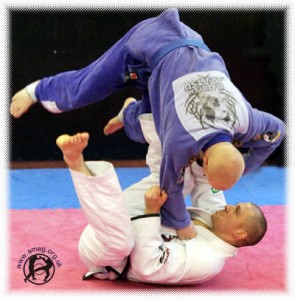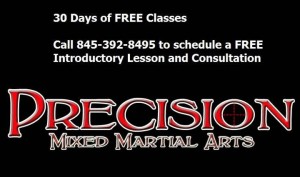
Congratulations! You’ve made the decision to begin your Brazilian Jiu-Jitsu journey. You’re probably pretty excited, maybe even a little nervous. That’s normal, as long as you’ve chosen an academy with passionate qualified coaches, you have nothing to worry about. The benefits of Brazilian Jiu-Jitsu are bountiful. Training is a beautiful and productive way to learn more about yourself and overcome any difficulties that you may be experiencing throughout your life. However, there are a handful of very common beginner mistakes that could stunt your progress. Here’s a list of common things to avoid:
Learn to properly tie your belt.
When you arrive at your academy, the first thing most people do before stepping onto the mats is to change into their Gi. This is where one of the most common mistakes occurs. First and foremost, make sure your pants are facing the right way. My first day, I put my pants on backwards and my first interaction with my coach was him discreetly alerting me that my pants were on backwards. I felt like a fool, but the longer I trained, I realized it’s a classic beginner error. When putting on your pants, make sure that the drawstring loops and logo are in front. Draw the strings so that the pants are snug around your waist, pull them through the loops and tie a knot in the front. Now that your pants are on and you’ve put on the Gi jacket, it’s time to tie the belt. There are tons of online tutorials on how to tie a belt, and they’re all pretty simple. This may seem insignificant, but a poorly tied belt sends a message to your coaches and classmates that you’re not taking this seriously. Dress like you want to be there.
Stay consistent

Attendance is important for progress. Make sure to come to class often and that your training is consistent. It’s okay to miss a class to spend time with your family and friends, and it’s understandable that work will get in the way sometimes. With everything going on in your life, it’s vital to keep track of how often you’ve been attending. If you’re only coming to class once a week, you’re doing yourself a disservice. Sure, one day a week is better than nothing, however you’re putting your body through new motions and challenging your brain to understand brand new concepts. If you only practice these new techniques once a week, there’s a good chance that you’ll forget some key details by the time the following week rolls around. Most submissions require some sort of setup and consist of multiple steps. If you’re missing one step, you could be missing 30% of the move! Imagine throwing a punch with 30% of your arm missing. It wouldn’t be nearly as effective, and probably would fall short of your target. In addition to making sure you’re understanding and remembering techniques, attending class regularly will get your body into the shape that you need to perform at your full potential.
Leave your ego at the door.
This is something that you’ve probably heard before, and arguably the most important thing for beginners to remember. Jiu-Jitsu is humbling and coming in with a “tough guy” attitude can be worst thing for your progress. Come in viewing yourself as a student and keep in mind that you’re new to this. It’s healthiest to view Jiu-Jitsu as a scholarly pursuit, something that you’re working on learning. Be patient with yourself. Don’t muscle through techniques. Although Jiu-Jitsu is a physically demanding activity, people often mistake strength for technique. Yes, being strong can be beneficial in Jiu-Jitsu as well as other forms of combat, however it’s common for stronger guys to overlook details of techniques because they can muscle their way to victory. This is all well and good until they roll with somebody of similar or more powerful physique. Always keep in mind to make sure you’re doing the technique properly. If you’re using a herculean effort, you’re probably doing something wrong.
Drill often.
I know, once open mat time comes around, everybody just wants to roll. Rolling is great, you can learn a lot, you get to apply the techniques that you’ve been drilling, and it’s inevitably the most fun part of training. However, it’s important to balance your open mat time with drilling sessions as well as rolling. Try to find a higher belt who’s willing to drill with you, they can provide insight that you may have overlooked. Even if it’s just you and another novice, just drill the techniques that you had gone over in class until you’re feeling confident. Then go for a few rolls and try to hit the moves you were drilling.
Have fun.
Above all, make sure that you’re having fun! Jiu-Jitsu is a beautiful discipline and has brought more joy to my life than any other activity that I’ve been a part of. Enjoy learning, go in with a positive and humble attitude, drill lots and stay consistent. Happy rolling!
If you want to make your Brazilian Jiu-Jitsu dreams a reality, come check out Precision Boxing and MMA; the Hudson Valleys Premier mixed martial arts academy! Give us a call at (845)392-8495 to schedule your free lesson today!

